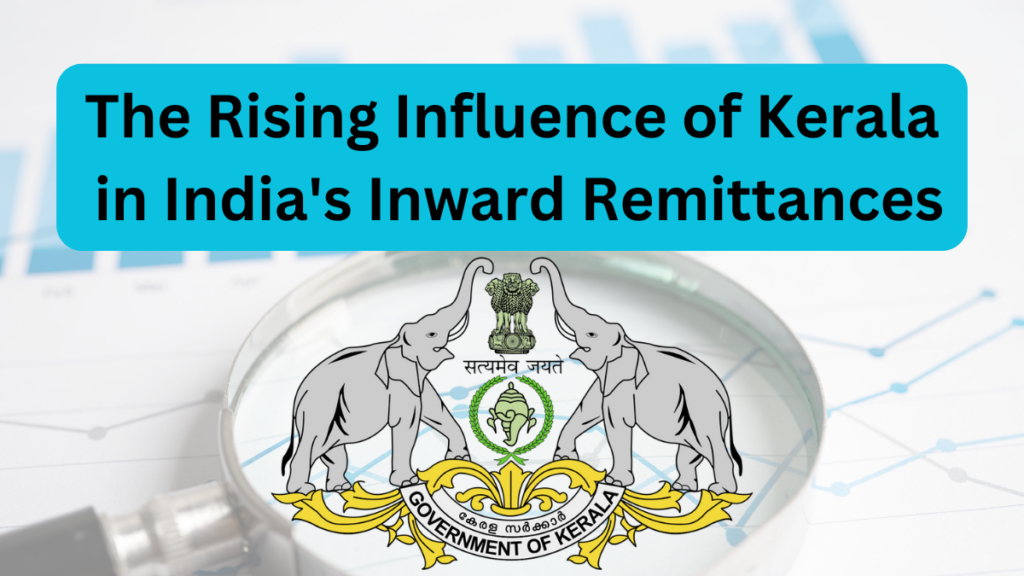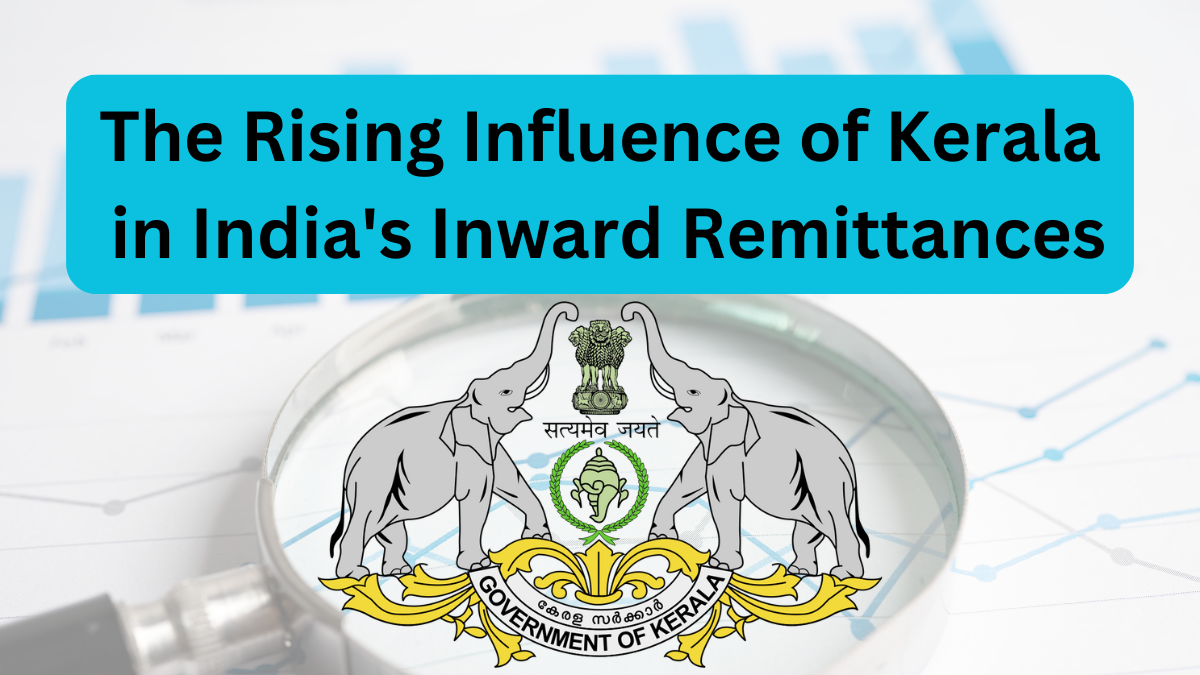The share of Kerala in India’s inward remittances has nearly doubled, surging from 10.2% in FY21 to 19.7% in FY24. This remarkable increase follows the post-Covid recovery of inflows from Gulf Cooperation Council (GCC) countries, which are historically the primary sources of remittances for Kerala.
Meanwhile, Maharashtra continues to top the list with 20.5% of inward remittances in FY24, though it has declined significantly from 35.2% in FY21, according to data published in the RBI March Bulletin.

State-wise Growth in Remittances
The report highlights the shifting landscape of remittance distribution across various states in India. Apart from Kerala and Maharashtra, other key states have also witnessed changes in their remittance inflows:
- Tamil Nadu: Increased from 9.7% in FY21 to 10.4% in FY24.
- Karnataka: Rose from 5.2% to 7.7% during the same period.
- Punjab: Saw a rise from 3% in FY21 to 4.2% in FY24.
These changes are influenced by various factors, including overseas employment opportunities, migration patterns, and evolving economic conditions in major remittance-sending countries.
| State | Remittance Share in FY21 | Remittance Share in FY24 |
|---|---|---|
| Maharashtra | 35.2% | 20.5% |
| Kerala | 10.2% | 19.7% |
| Tamil Nadu | 9.7% | 10.4% |
| Karnataka | 5.2% | 7.7% |
| Punjab | 3.0% | 4.2% |
Kerala’s Changing Migration Trends
The Kerala Migration Survey 2023 revealed a notable rise in student migration among total emigrants. This trend underscores a growing shift toward non-GCC countries as students travel abroad for higher education and subsequently secure employment.
According to Madan Sabnavis, Chief Economist at Bank of Baroda, the decline in remittances from the Gulf during the pandemic was due to halted economic activity. However, with the resumption of normalcy, Kerala’s share in remittances has returned to its pre-pandemic levels, similar to FY17 trends.
“Typically, those who migrate to the Gulf work in lower-income jobs, which makes their remittance contributions vulnerable to economic disruptions,” he noted.
The US Leads in Global Remittance Contributions to India
The United States has emerged as the largest contributor to India’s remittances, accounting for 27.7% in FY24, up from 23.4% in FY21. Meanwhile, the UAE, the second-largest contributor, saw a decline, with its share falling from 26.9% in FY17 to 18% in FY21, before slightly recovering to 19.2% in FY24.
| Top Remittance-Sending Countries | FY17 | FY21 | FY24 |
| United States | N/A | 23.4% | 27.7% |
| United Arab Emirates | 26.9% | 18.0% | 19.2% |
| United Kingdom | N/A | N/A | Significant Growth |
| Canada | N/A | N/A | Significant Growth |
| Singapore & Australia | N/A | N/A | Significant Growth |
Rise in Skilled Migration and Its Impact on Remittances
The increasing contribution from developed economies like the US, UK, Canada, and Australia signifies a shift from low-skilled to high-skilled labor migration.
Gaura Sengupta, Chief Economist at IDFC FIRST Bank, attributes this trend to an increased demand for skilled Indian professionals in developed markets.
“The rising share of remittances from the US, Europe, and other developed markets has reduced India’s dependence on crude oil-driven remittances from GCC countries. This is why we now observe strong remittance inflows even during periods of low oil prices.”
India’s Remittance Growth and Economic Significance
India’s annual remittances have more than doubled over the past decade, reaching a record-breaking $118.7 billion in FY24, compared to $55.6 billion in FY11. This increase solidifies remittances as a crucial source of external financing for the Indian economy.
Key Economic Contributions of Remittances:
- Bridging Trade Deficits: Between FY11 and FY24, net remittance receipts financed around 42% of India’s merchandise trade deficit annually.
- Foreign Exchange Reserves: Stable remittance inflows help strengthen India’s foreign exchange reserves, ensuring economic stability.
- Improved Living Standards: Remittances directly contribute to better healthcare, education, and infrastructure development in recipient states.
India’s Global Migration Trends
- The number of Indian migrants worldwide has tripled from 6.6 million in 1990 to 18.5 million in 2024.
- India’s global migration share has risen from 4.3% to 6% over the same period.
- While GCC countries still host about half of all Indian migrants, many professionals are now relocating to the US and other advanced economies.
- 78% of Indian migrants in the US are employed in high-income sectors like management, business, and science, leading to higher remittance contributions.
FAQs
1. Why has Kerala’s remittance share increased significantly?
Kerala’s share surged as post-Covid economic recovery in GCC countries led to higher remittance inflows. Additionally, an increase in student migration to non-GCC countries has contributed to long-term remittance stability.
2. Why has Maharashtra’s share of remittances declined?
Maharashtra’s drop from 35.2% in FY21 to 20.5% in FY24 can be attributed to a shift in migration trends and a higher number of skilled professionals settling in countries like the US, UK, and Canada.
3. What factors contribute to the rising remittance share from the US?
The US now accounts for 27.7% of India’s remittances, thanks to high-skilled Indian professionals working in sectors like IT, finance, and healthcare, earning significantly more than low-income laborers in the Gulf.
4. How do remittances benefit India’s economy?
Remittances stabilize foreign exchange reserves, reduce trade deficits, and contribute to better living standards in recipient states, making them a vital pillar of India’s economic growth.
This evolving remittance landscape indicates a shift towards high-skilled migration and diversified income sources, ensuring long-term economic benefits for India. With the US and other developed nations playing an increasing role in remittance inflows, India’s reliance on Gulf economies may continue to decrease in the future.
Click here to learn more
Pari is a passionate writer known for captivating stories that blend imagination and reality. Inspired by travel, history, and everyday moments, Pari crafts narratives that resonate deeply with readers.
